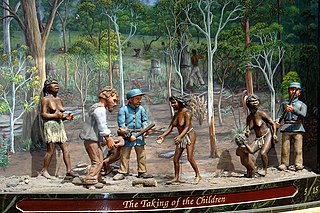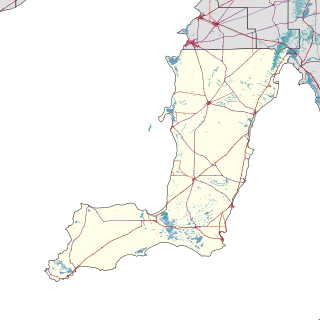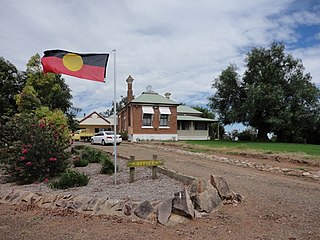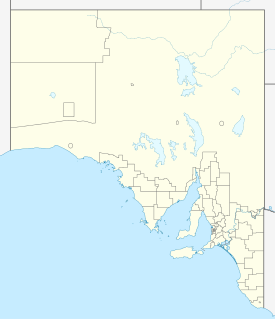Related Research Articles

The Stolen Generations were the children of Australian Aboriginal and Torres Strait Islander descent who were removed from their families by the Australian federal and state government agencies and church missions, under acts of their respective parliaments. The removals of those referred to as "half-caste" children were conducted in the period between approximately 1905 and 1967, although in some places mixed-race children were still being taken into the 1970s.
Aboriginal Protection Board, also known as Aborigines Protection Board, Aborigines Welfare Board, Board for the Protection of Aborigines and similar names, refers to a number of historical Australian state-run institutions with the function of regulating the lives of Aboriginal Australians. They were also responsible for administering the various half-caste acts where these existed and had a key role in the Stolen Generations. The boards had nearly ultimate control over Aboriginal people's lives.
The office of the Protector of Aborigines was established pursuant to a recommendation contained in the Report of the Parliamentary Select Committee on Aboriginal Tribes, of the House of Commons. On 31 January 1838, Lord Glenelg, Secretary of State for War and the Colonies sent Governor Gipps the report. The office of Chief Protector of Aborigines was established in some states, and in Queensland the title was Protector of Aboriginals.
Doris Pilkington Garimara, also known as Doris Pilkington, was an Australian author. She wrote Follow the Rabbit-Proof Fence (1996), a story of three Aboriginal girls, among them Pilkington's mother, Molly Craig, who escaped from the Moore River Native Settlement in Western Australia and travelled 2,414 km for nine weeks to return to their family.

The Moore River Native Settlement was the name of the now defunct Aboriginal settlement and internment camp located 135 kilometres (84 mi) north of Perth and 11 kilometres (6.8 mi) west of Mogumber in Western Australia, near the headwaters of the Moore River.

Roelands is a town in the South West region of Western Australia on the South Western Highway, between Brunswick Junction and Bunbury. At the 2011 census, Roelands had a population of 620.

Cummeragunja Reserve or Cummeragunja Station, alternatively spelt Coomeroogunja, Coomeragunja, Cumeroogunga and Cummerguja, was a settlement on the New South Wales side of the Murray River, on the Victorian border near Barmah. It was also referred to as Cumeroogunga Mission, although it was not run by missionaries. The people were mostly Yorta Yorta.

Marribank, earlier known as Carrolup, was the site of one of two large Native Settlements for Indigenous Australians established by the office of the Protector of Aborigines of the Western Australian State Government. It was a site where some of the Stolen Generations were taken after being separated from their families.
The history of the Aboriginal inhabitants of Western Australia has been dated as existing for 50-70 thousand years before European contact. This article only deals with documented history from non indigenous sources since European settlement in Perth.

Half-Caste Act was the common name given to Acts of Parliament passed in Victoria and Western Australia in 1886. They became the model for legislation to control Aboriginal people throughout Australia, such as the Aboriginals Protection and Restriction of the Sale of Opium Act 1897 in Queensland.
This is a timeline of Aboriginal history of Western Australia.

Point Pearce, also spelt Point Pierce in the past, is a town in the Australian state of South Australia. The town is located in the Yorke Peninsula Council local government area, 194 kilometres (121 mi) north-west of the state capital, Adelaide. At the 2016 census, Point Pearce had a population of 91.
An Aboriginal reserve, also called simply reserve, was a government-run settlement for Aboriginal Australians, created under various state and federal legislation. Along with missions and other institutions, they were used from the 19th century to the 1960s to keep Aboriginal people separate from the white Australian population, for various reasons perceived by the government of the day. The Aboriginal reserve laws gave governments much power over all aspects of Aboriginal people’s lives.

The Cootamundra Domestic Training Home for Aboriginal Girls, commonly known as "Bimbadeen" and Cootamundra Girls' Home, located at Cootamundra, New South Wales operated by the New South Wales Aborigines Welfare Board from 1911 to 1968 to provide training to girls forcibly taken from their families under the Aborigines Protection Act 1909. These girls were members of the Stolen generations and were not allowed any contact with their families, being trained to work as domestic servants.

Koonibba is a locality and an associated Aboriginal community in South Australia located about 586 kilometres (364 mi) northwest of the state capital of Adelaide and about 38 km (24 mi) northwest of the municipal seat in Ceduna and 5 km (3.1 mi) north of the Eyre Highway.
The Aboriginal South Australians are the Indigenous people who lived in South Australia prior to the British colonisation of South Australia, and their descendants and their ancestors. There are difficulties in identifying the names, territorial boundaries, and language groups of the Aboriginal peoples of South Australia, including poor record-keeping and deliberate obfuscation, so only a rough approximation can be given here.
William Garnet South was a police officer in Alice Springs and Chief Protector of Aborigines. He was also, for a short period, proprietor of the Stuart Arms Hotel in Alice Springs.
Palm Island Aboriginal Settlement, later officially known as Director of Native Affairs Office, Palm Island and also known as Palm Island Aboriginal Reserve, Palm Island mission and Palm Island Dormitory, was an Aboriginal reserve and penal settlement on Great Palm Island, the main island in the Palm Island group in North Queensland, Australia. It was the largest and most punitive reserve in Queensland.
Peter Barrow was a son of Sir John Barrow, 1st Baronet, and an early settler in the colony of Western Australia, becoming a magistrate and Guardian of Aborigines, Anglican priest and school teacher in York, Western Australia. He left the colony after two years and became a British consul.
Peter Albany Bell was a caterer and confectioner in Western Australia. He was a significant manufacturer in the state's developing economy.
References
- ↑ Heritage Council of WA. "Roelands Village". inHerit. Government of Western Australia. Retrieved 28 December 2020.
- 1 2 3 4 5 Rosser, Debra (29 November 2016). "Roelands Native Mission Farm (1938 - 1975)". Find & Connect Web Resource Project. Commonwealth of Australia. Retrieved 28 December 2020.
- 1 2 Woods, Meghan (10 July 2013). "Roelands mission transforming the hurt into healing". ABC Local. Australian Broadcasting Corporation. Retrieved 28 December 2020.
- ↑ Tamblyn, M (1979). "Bell, Peter Albany (1871–1957)". Australian Dictionary of Biography . 7. Melbourne University Press. ISSN 1833-7538 . Retrieved 27 December 2020– via National Centre of Biography, Australian National University.
- ↑ "Roelands Native Mission Farm". Healing Foundation. Retrieved 28 December 2020.
| | This Western Australia article is a stub. You can help Wikipedia by expanding it. |
| | This Indigenous Australians-related article is a stub. You can help Wikipedia by expanding it. |